Tor Bella Monaca: The Black Hole of Rome is city’s dark underbelly of drugs and violence
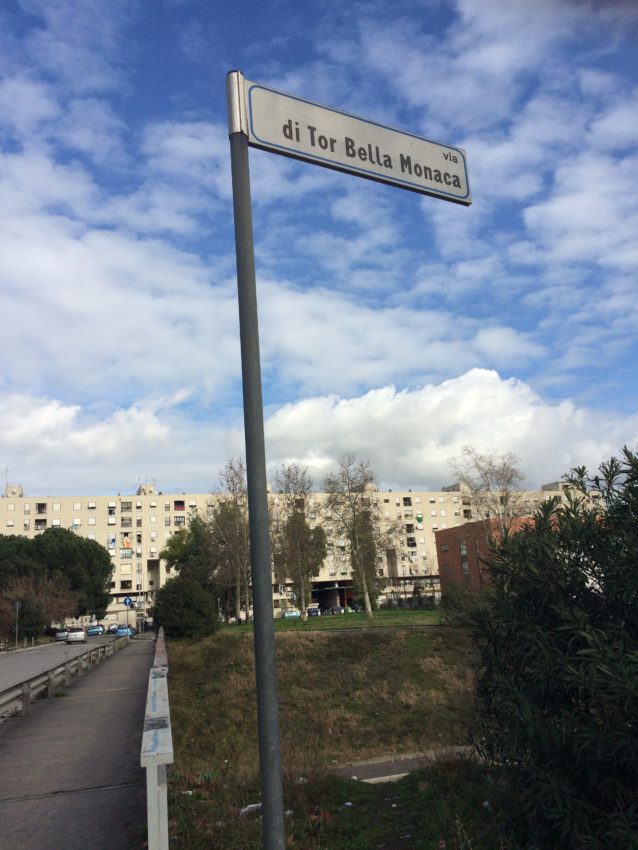
(FIRST OF A THREE-PART SERIES)
Our car slowly cruises up a narrow side street past a series of tall apartment buildings. The street signs are a mystery. It’s way too dark to see where we are. The street lights, long been shot out, stand like black scarecrows vainly warning visitors to stay away. I vaguely make out graffiti and black soot on the walls. My driver tells me to return during the day. Then I can see the buildings in their full dilapidation. The only light comes from a few windows and the moon which casks a yellowish glow on the buildings. They look, fittingly, almost radioactive.
As we drive past a parking lot separating two buildings, we pass a middle-aged man sitting alone on a folding chair. He is doing nothing but holding a cell phone. He isn’t talking. He isn’t reading. He isn’t eating. He’s just staring. At me. In a car with a driver from the neighborhood and a square-jawed, swarthy Italian who looks right out of central casting, I feel like a hamster in a snake farm. We drive past and his eyes never leave my face. He rotates his head until he’s almost out of view. That’s when he lifts his cell phone.
“He’s calling to the dealers inside one of the buildings,” says my driver. “What we’re doing is pretty suspicious.”
What we’re doing is touring Tor Bella Monaca at night. Travel guides list a few things you don’t do in Rome: Don’t take photos inside art galleries. Don’t order a cappuccino in the afternoon. Don’t drink in excess. It says nothing about touring arguably Rome’s most dangerous neighborhood after sunset, an area simply known as the Black Hole of Rome. When I told my Roman friends my plan, they all said I needed counseling. I knew exactly what I was doing. And it wasn’t thrill seeking.
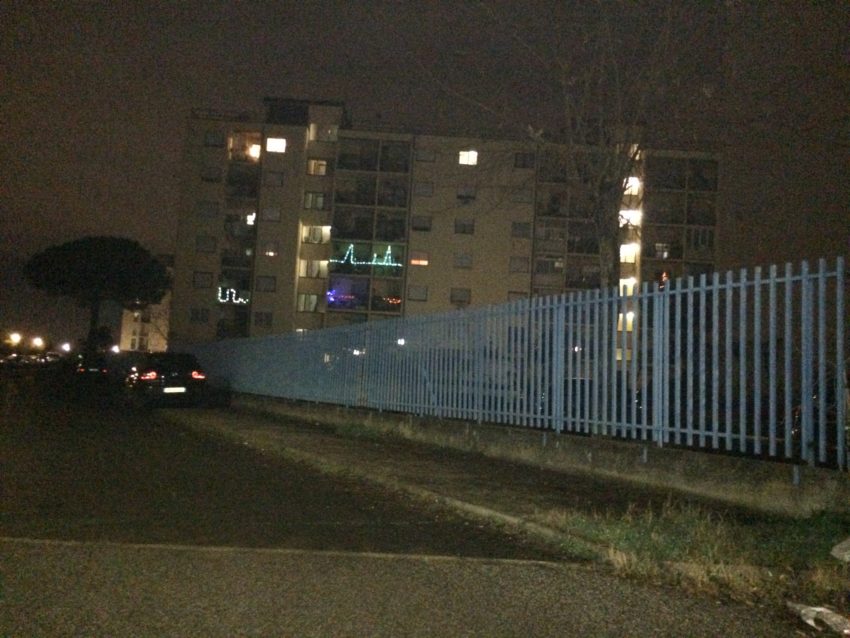
I wanted to write about crime in one of the world’s most glamorous, most beautiful tourist cities in the world. I wanted to dive head first into the dark underbelly of Rome, a part of the Eternal City that outsiders never see nor know about. I also wanted to show how crime in Rome doesn’t compare to crime in American cities. The U.S. is a country where people still kiss the barrel of a gun and the cycle of poverty is rampant with the potholes of violence and drugs and desperation and anger.
In Rome, the closest you get to that environment is Tor Bella Monaca or, as the locals call it, TBM. Bring up the name to a Roman and his or her eyes get wide. No, they’ve never been there. No, they never want to go. It’s a neighborhood locked in a spiderweb of drug culture. It’s where generations of drug dealers live and sometimes thrive but have little hope or desire to get out. It’s where a crazed man on drugs once threw his girlfriend off the roof of their 15-story building. It’s where a 17-year-old boy was shot twice in the face, execution style. It’s where two days after I interviewed a bar owner, someone rammed a car through his front window and stole his cash box. It’s where I interviewed an addict who spent 15 years in nine prisons for dealing. It’s where the average annual income is 1,500 euros. It’s where the dropout rate is 15 percent, compared to 9 in Rome overall.
But compared to the South Bronx, Chicago’s South Side, the projects of New Orleans? Please. According to the Rome police department and ANSA, the Italian news agency, in 2014, Rome, a city of 2.6 million people, had 27 murders. Chicago, which has 2.7 million people, had 407, according to the FBI. St. Louis (pop. 318,000) had 158. Italy, with 60 million people, had all of 468 murders in 2014. That’s one in every 130,000 people, an all-time low. The U.S. (pop. 319 million) in 2013 had 12,253 homicides (11,208 from guns) or one in every 26,000, according to the United Nations Office on Drugs and Crime.
How Rome is dangerous you may not notice until you get back to your hotel room. It’s No. 2 in the world in pickpockets. (Barcelona is No. 1.) In fact Rome had a 75 percent increase from 2010 to 2013. That’s pickpockets REPORTED. No one knows how many tourists do nothing due to not knowing who to call or Romans who know it does little good. (Tip: Always report it. The more reports a neighborhood gets the more police are stationed in the area.)
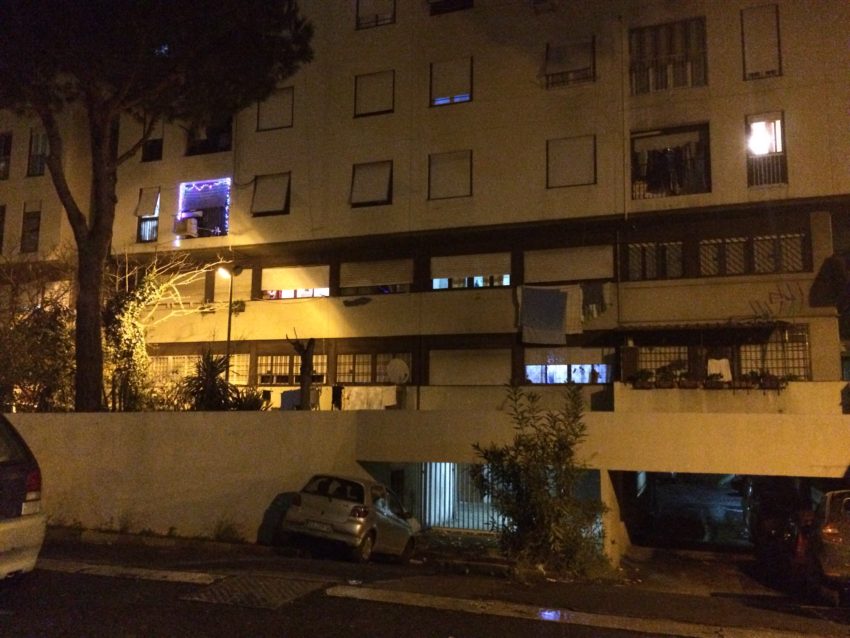
Tor Bella Monaca’s nom de rigueur is narcotics. I ask Ivan Viti, my driver, if what I read was accurate that 30 percent of Tor Bella Monaca’s 30,000 residents have been arrested. He said no.
“I thought so,” I say. “That seemed a little high. How much, really? Ten percent? Fifteen?”
“It’s 80 percent,” he says. “It doesn’t mean they went to jail.”
Viti should know. He lived on the edge of Tor Bella Monaca in a neighborhood called Torre Angela for nearly all of his 45 years. Eight months ago, after fighting off alcoholism, he finally got out. He moved to start over in Zagarolo, a pleasant suburb southeast of Rome, almost in the wine country of Frascati. Few people would offer me a more secure ride through Tor Bella Monaca than Viti. He’s well known in the area as was his father, Umberto, who died of cancer in the mid ‘80s.
Umberto Viti was a cop.
“You walk into my area, you don’t even know you change areas,” Viti says. “The area is a low-class, poor area but the people work. They don’t do any crap.They work. But if you cross the border into Tor Bella Monaca, it’s a different group. It’s the same social class but different attitude. They just do bad things.”
Angelo Bondi, a Roman living in Australia, has a sister who knows Viti. Bondi drives me to a parking lot of a bar in Zagarolo to meet him. Viti gets behind the wheel. Medium build with a full head of bushy brown hair and a goatee, flecked with gray, Viti has the tired of eyes of a man who has seen too much. Like the time he was driving home from a bar and three cars stopped a car in front of him. A man hopped out and shot the man through the window of the car they stopped.
Handguns are illegal in Italy. Knives are not. That is the weapon of choice here. However, guns can be seen and heard in Tor Bella Monaca. Many residents either have one on them or have one in their home. On Feb. 17, a police raid of a 32-year-old dealer’s apartment found an AK-47 and 17 ounces of cocaine. Guns here are sold like drugs: way, way under the counter.
“It’s easier to buy guns here than in America,” Viti says. “You know where to go and you buy it. It’s not like in the United States. You want to buy a gun and you go into a shop. But in America you must show some ID or criminal record. Here you don’t have to show anything. You just go there. It’s easier to buy a gun in Tor Bella Monaca than even in Texas.”
To get to Tor Bella Monaca, you must really want to get there. You won’t stumble onto it. It is nine miles east of the Colosseum, way past the Termini train station and the Vatican’s seven churches and the beauty and glory of Rome. TBM has no postcards. We avoid city traffic by taking the E80 ring road that wraps around the southern end of the city. It takes us nearly an hour. I see the vague outlines of the dark monolithic apartment buildings, the tors, or towers, which stick up like giant gravestones. But before we enter the belly of the dragon, Viti wants to show me something else.
We drive down a small street lined with garbage. In the dim light I see a chunky prostitute walking toward the main drag. Spiked fences protect large houses next to low-rent apartment houses. The large houses are where some drug dealers live. One time, police arrested a man and found 2 million euros in his house.
“People in Tor Bella Monaca are not poor,” Viti says. “They have a lot of cash and they live like scum.”
He means the drug dealers are not poor. The rest of the neighborhood struggles to make rent which is why they live in an area with the cheapest housing in Rome. As we go deeper into the neighborhood, Tor Bella Monaca doesn’t look much worse than any other areas of Rome’s periphery. In a clean, well-lit strip mall there’s a clothes store and a cafe and seafood restaurant. Unlike in U.S. ghettos, bars aren’t on the windows.
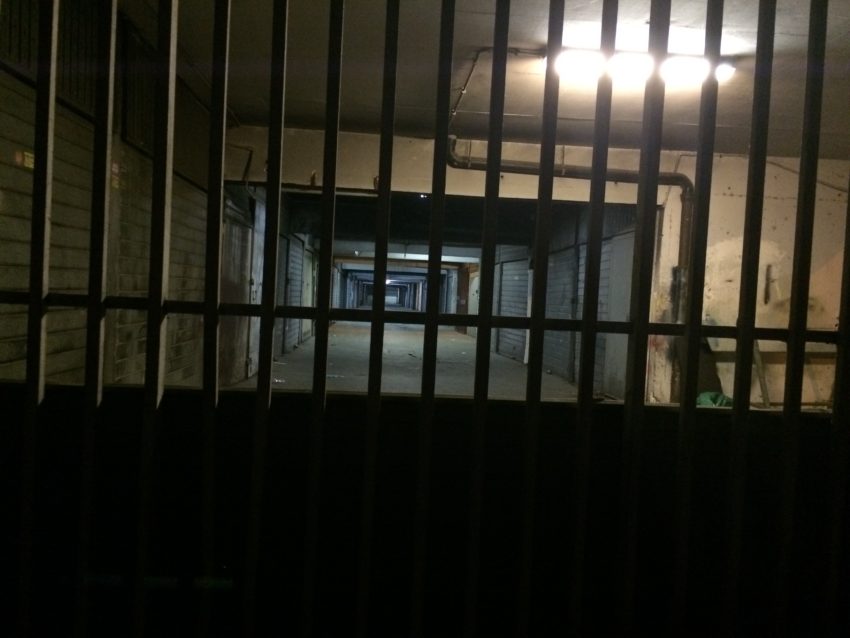
But as we drift into the residential areas, the face of Tor Bella Monaca changes. It becomes dark. Real dark. Drug dealers have shot out the street lights to provide more hiding during exchanges. Viti drives down a short embankment into a parking garage under an apartment building. The only lights are our headlights. Behind a giant iron gate is an empty parking area where steel sliding doors enclose cars. No one is in sight.
We drive to the side of a five-story building that is still adorned with some Christmas lights. Only two windows in the entire building are illuminated. Viti gets out of the car. He’s going inside to ask one of his dealer friends if he’ll grant me an interview. Five minutes later he returns.
“It’s not the right night,” he says. “A lot of police are around, and they’re preparing the doses.”
I wonder if the sight of me started the rumor. I look more like I’m from Interpol than I do Rome. We cruise along and I ask Viti how Tor Bella Monaca got this way. At one time, this was considered prime real estate. Excavations have uncovered villas with thermal baths from the 4th century BC to the 3rd century AD. The Borgheses, a family of nobles who came into power in the 13th century and became one of the most powerful families of Rome, owned a 15-story tower in the mid-19th century. But the lack of public services this far out led to the Urban Rehabilitation Program of Tor Bella Monaca. The city provided public housing in the mid-1960s and became a boon to the poor. Today, one-bedroom apartments can be rented for 75 euros a month. In 2010, then-Rome mayor Gianni Alemanno announced he would rebuild Tor Bella Monaca. Nothing happened.
Unlike other parts of Rome’s outskirts, Tor Bella Monaca is not occupied by East European or West African immigrants desperate and poor and escaping a life much worse than this. Tor Bella Monaca is all Italians.
“The city has abandoned it,” Viti says. “There isn’t anyone to teach in the house. The people get into the house without applying with the commission. So the Italian government doesn’t even know who lives in the buildings. It’s kind of like Gotham City.”
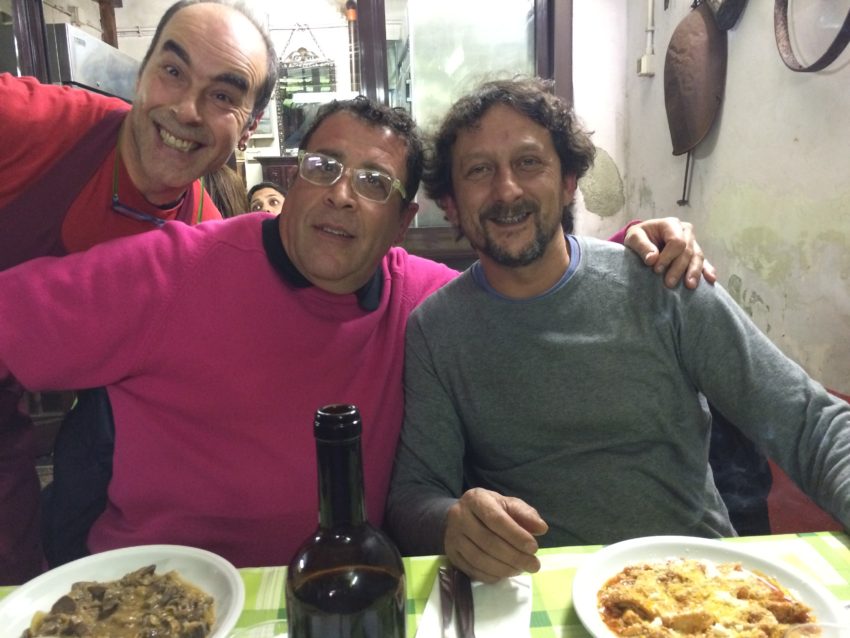
I try to take pictures but the lack of lighting makes it nearly impossible. It’s like shooting inside a cave. We get back on a main street and he slows down to show me a tower down the hill that looks undistinguished from the rest. Viti says this is where many of the addicts live. I’ve never had a problem with dealers. They won’t give you drugs unless you pay them. They do take no for answer. So just say no.
Addicts are different. They’re desperate. They’re violent. They’re armed. I ask if we can get closer to take a picture. Viti, for the first time on our drive, looks visibly scared. He says no. Quickly. Angelo says let’s get outtahere.
“It’s too dangerous,” Viti says. “I’m not going to go there. There are tough gangs there. They have mobile phones and they call each other. Look, we look suspicious carrying around in a little car with three guys.”
We hurry back to one of the side roads running past apartment buildings. I see five youths outside a bar. They stop their conversation to eye us. Not a single one looks ready for an interview. Viti says, “They’re managing the situation.” Two men look inside an apartment window, see us drive by and run down a sidewalk. I see a well-groomed man in a shirt and tie waiting in an expensive parked car. People from all over Rome come to score drugs here. If you’re willing to buy, you’re safe. If you’re not, like us, you need a better reason for being here than the one we’ve got.
“I know that it’s not a good area,” Viti says. “It’s scummy and dangerous. But you can live in it. At the moment, most of these kids are between the ages of 16 and 20 which are the new generation. They’re the kids of the old dealer. So the father goes to the children: ‘OK, get this and make your life.’ They’re passing on the business.”
As we approach an intersection, a car in front of us slows down. A man on a scooter turns the corner, slows toward the car and the pair make a drug/money exchange as fast as any pickpocket in the city. It’s one of a hundred drug deals that go down that night. One of a hundred that won’t get caught. Later, we had dinner in a classic Roman trattoria called Bette & Meri. It’s in another scruffy neighborhood called Casilina where we walked by a brothel to get to the front door. I tell Viti about a May survey in Censis, Italy’s census department, that reported the neighborhood with the highest fear factor among its residents is Esquilino, a relatively decent neighborhood just west of the train station. It said 13.8 percent of the people are afraid. San Basilio, in northeast Rome, was 12.3 percent.
Tor Bella Monaca? it was only 9 percent, fifth down on the list.
“Tor Bella Monaca has only 9 percent people have fear,” Viti says, “because they fear nothing.”
NEXT: A Canadian who has spent 20 years running a bar in Tor Bella Monaca.


January 14, 2021 @ 5:08 pm
la più bella borgata de Roma ci abito da 1962…tonino